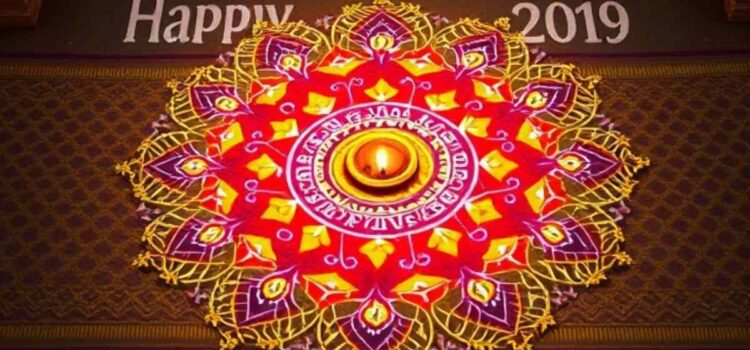The Festival of Lights, Diwali, is not just lighting up homes but also celebrating art, culture and creativity. Among many such traditions, rangoli is one of the most special ones, making intricate patterns at the entrance of dwellings that represent positivity and prosperity.
Let’s have a look at some awesome Diwali 2019 rangoli design ideas that blend pure traditional aspects with modern creativity.
Why Rangoli is Special for Diwali?
Rangoli is, in fact, a decorative art but serves to acknowledge the arrival of people and good fortune. This art has traditionally seen natural materials like rice flour and flower petals, but modern rangoli is a vibrant, colorful synthetic affair that resorts to innovative techniques.
Key Elements of Diwali Rangoli:
- Cultural Importance: Rangoli is the victory of good over evil.
- Raw Materials Used: Colored powders, flower petals, rice, and diyas.
- Modern Glamour: Modern designs combine past traditions with a modern look.
Traditional Rangoli Designs
Diwali, in 2019, experienced the revival of popular rangoli designs that have stood the test of time and have cultural significance.
Popular Traditional Designs:
1. Lotus Rangoli:
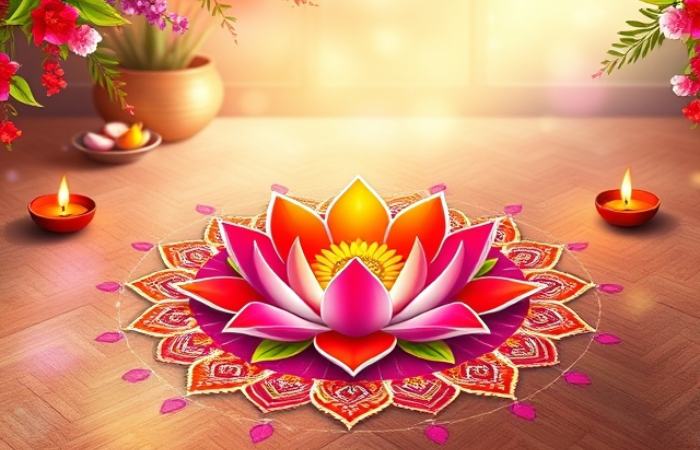
A geometry with even-petal distribution in an attractive color scheme, which portrays purity and wisdom.
2. Ganesha Patterns:
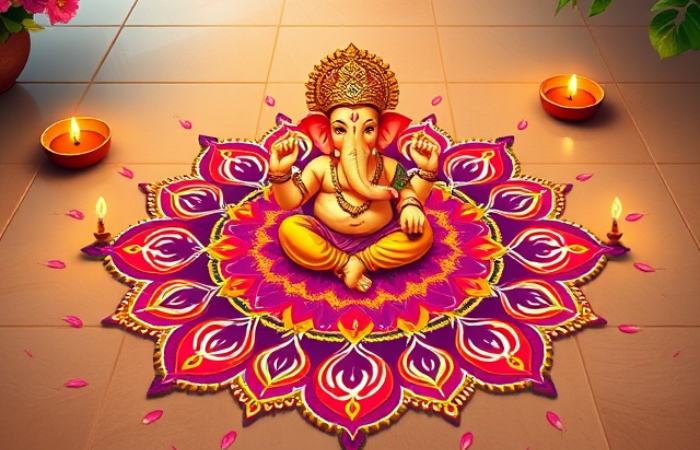
Rangoli art is dedicated to Ganesha, whose worship is thought to eliminate hurdles and lead to success.
3. Peacock Motifs:
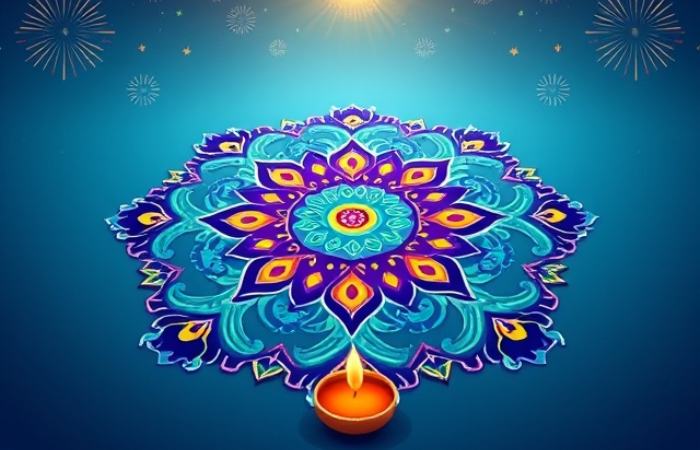
An artistic representation of the national bird, including its richly decorated plumage.
4. Kolam Patterns:
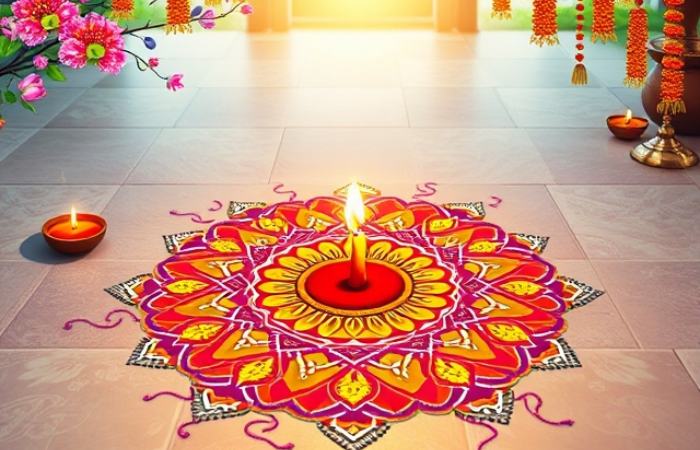
Typical South Indian rice flour ornamental designs that have a floral touch and other geometric shapes.
Modern and Eco-Friendly Rangoli Ideas
During Diwali 2019, there was a drastic change in design towards minimalism and eco-friendly approaches. People and families made use of modern designs and sustainable materials so that the environment and looks could be balanced.
Creative Ideas for a Modern Touch:
Floral Rangoli:
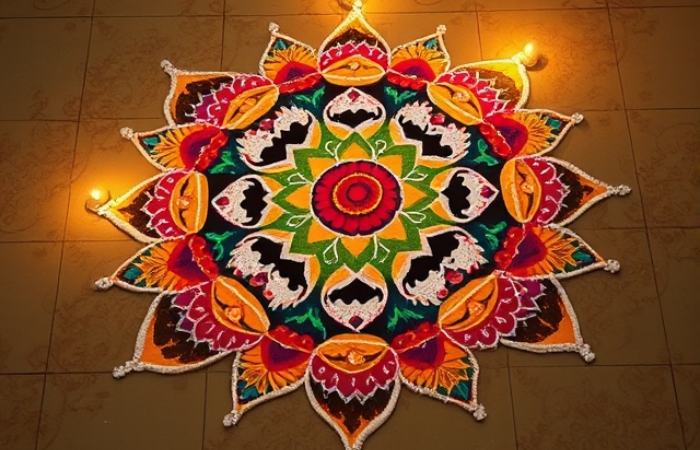
Use fresh marigold, rose, and jasmine petals to create beautiful designs.
Colored Rice Art:
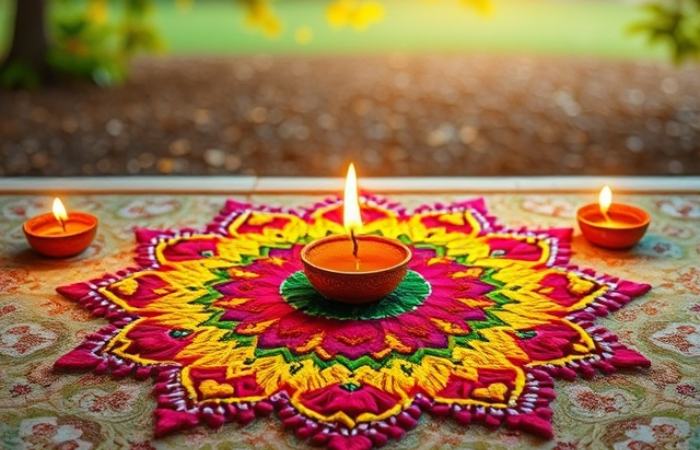
Create vibrant patterns by coloring rice with turmeric and beetroot.
Minimalist Patterns:
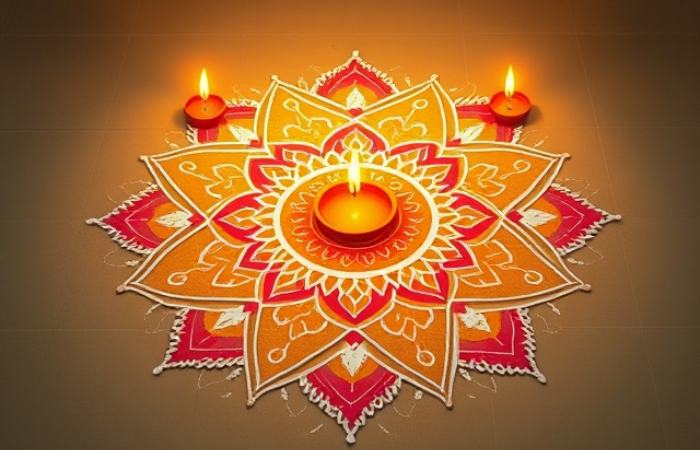
Modern designs are characterized by the use of clean lines, geometric shapes, and negative spaces.
3D Rangoli:
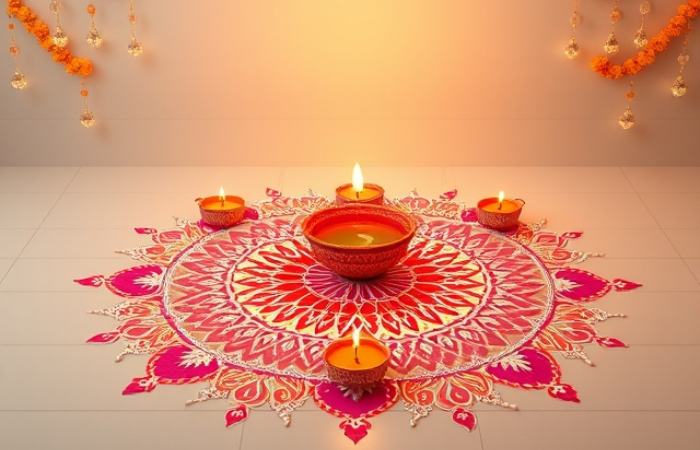
Use florals, pulses, or any small decorations to create depth and make it look 3 dimensional.
Tips to Create Stunning Rangoli
A lot of hard work and creativity goes into creating a beautiful rangoli, which involves considering appropriate materials and practices. Here are specific measures that will help you to make designs:
- Determine the Design: Have a plan or design drafted so that you do not mess up the work.
- Use Stencils / Cut Outs: Great for new people who want to achieve elaborate designs with ease.
- Use Combinations of Hues: Shades, aka darker tones, give better blending effects, whereas bright tonalities create a bolder look.
- Use Diyas: Position the diyas within the rangoli so that they look spectacular at night.
- Work as a Team / Group: Get your family involved so that you can enjoy while doing the sort.
Regional Variations in Rangoli Art
The different rangoli styles of the countries of India’s northern and southern, eastern, and western regions are quite distinct from one another. Each has its own uniqueness during the celebration of Diwali:
- Kolam (South India): Coloured patterns made from rice flour are often used to depict deities and nature.
- Alpana (Bengal): These are rice paste designs and are intricate as, according to most folks, they belong to traditional village painting.
- Gujarati Rangol: This style is predominantly loud and has bright colors with images of circles taken from Hindu fairy tales.
- Maharashtrian Rangoli uses 3D but instead includes flowers and diyas patterns for beauty enhancement.
Making Diwali Memorable with Rangoli
Rangoli’s Diwali designs of 2019 portray their signature visualization along with their combined slogan of tradition and modernism. It is not just about how a rangoli is done, but the fact that the artistry can be expressed in many forms makes the creation of rangoli interesting and festive as it can be done with friends and family.
Conclusion
Rangoli is not exclusively an art form and a style, but it is also culture, creativity, celebration, and togetherness. This Diwali, as you create your rangoli, take some time to personalize your work according to your style and the essence of the festival. Integrate the old with the new, use eco-friendly materials, and, most importantly, enjoy the process! A Very Happy and colorful Diwali to you and your family!

